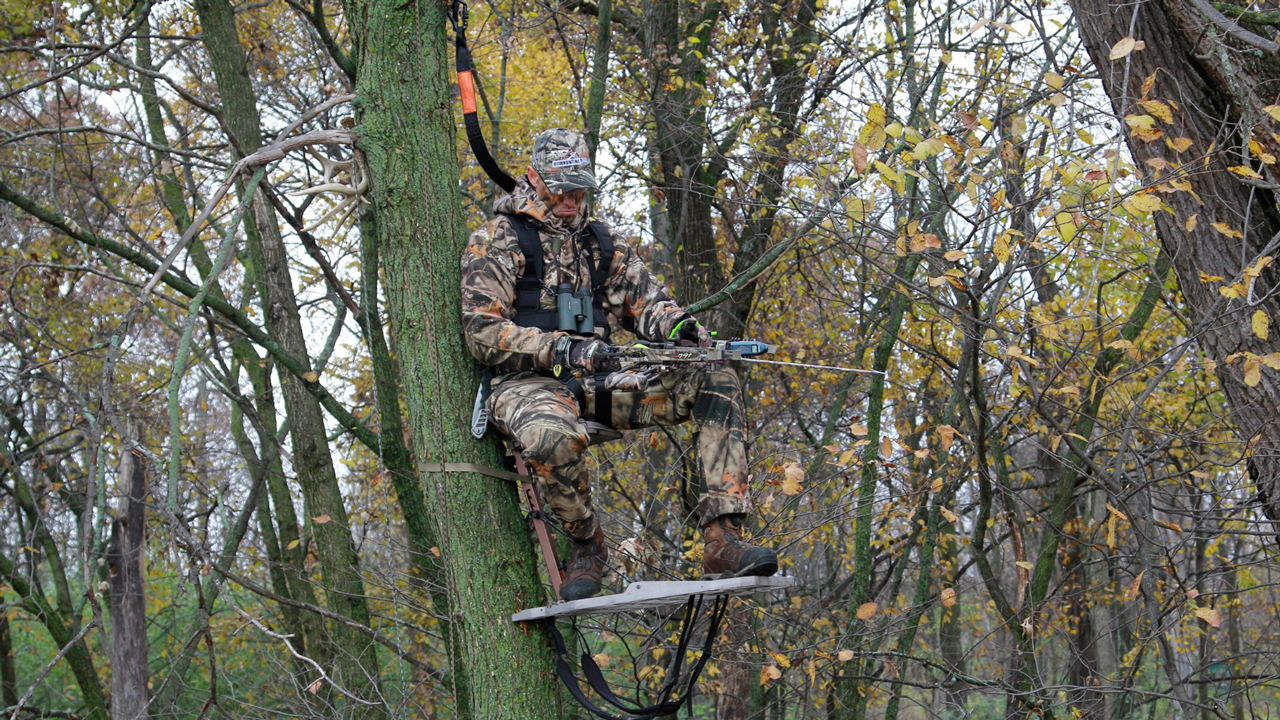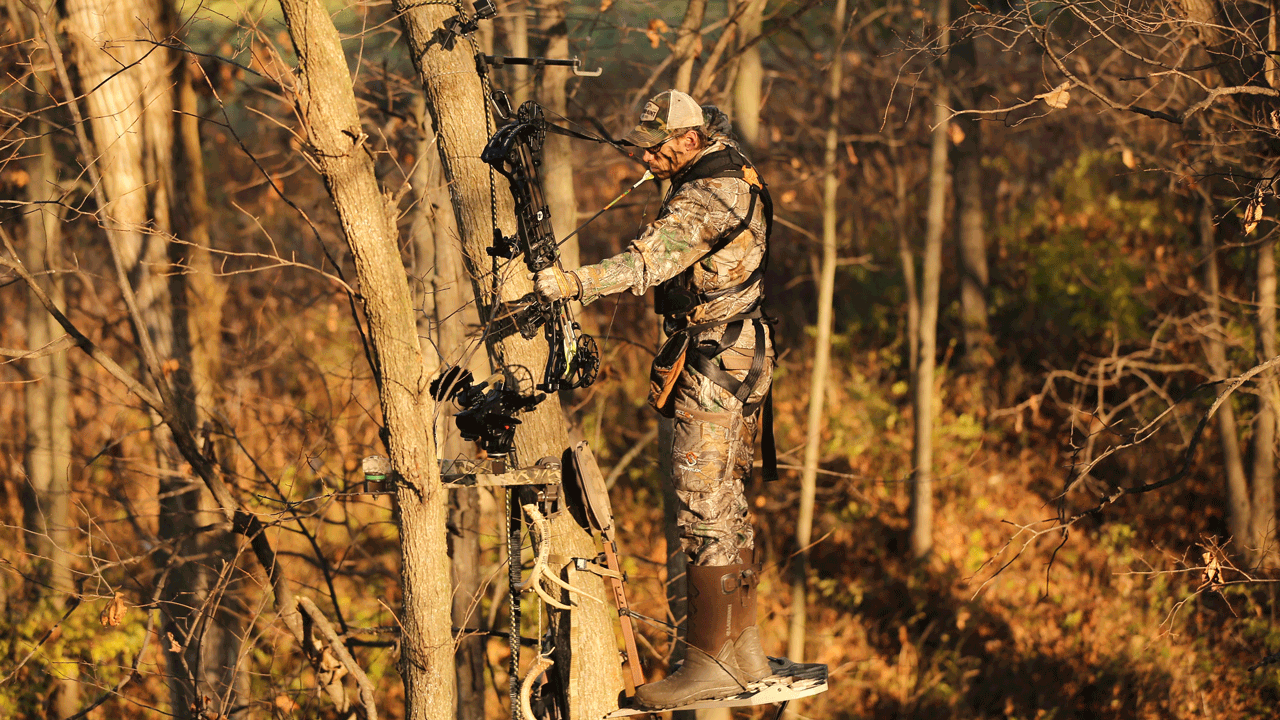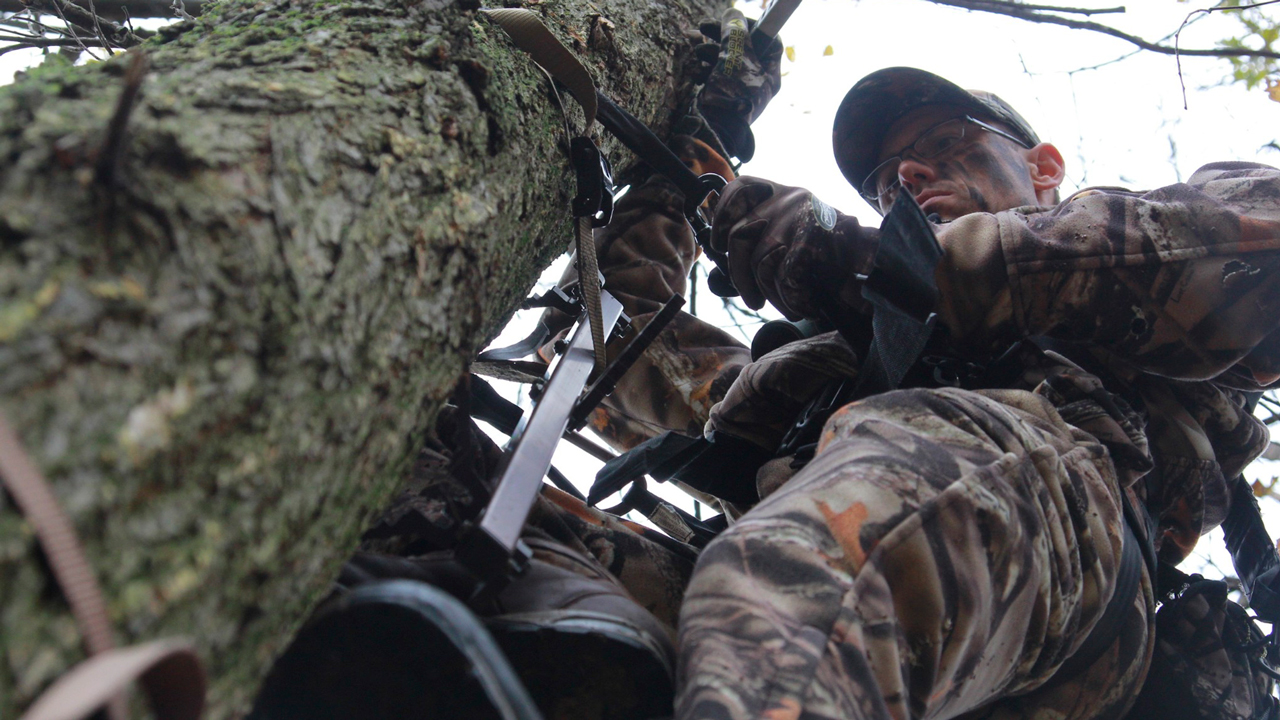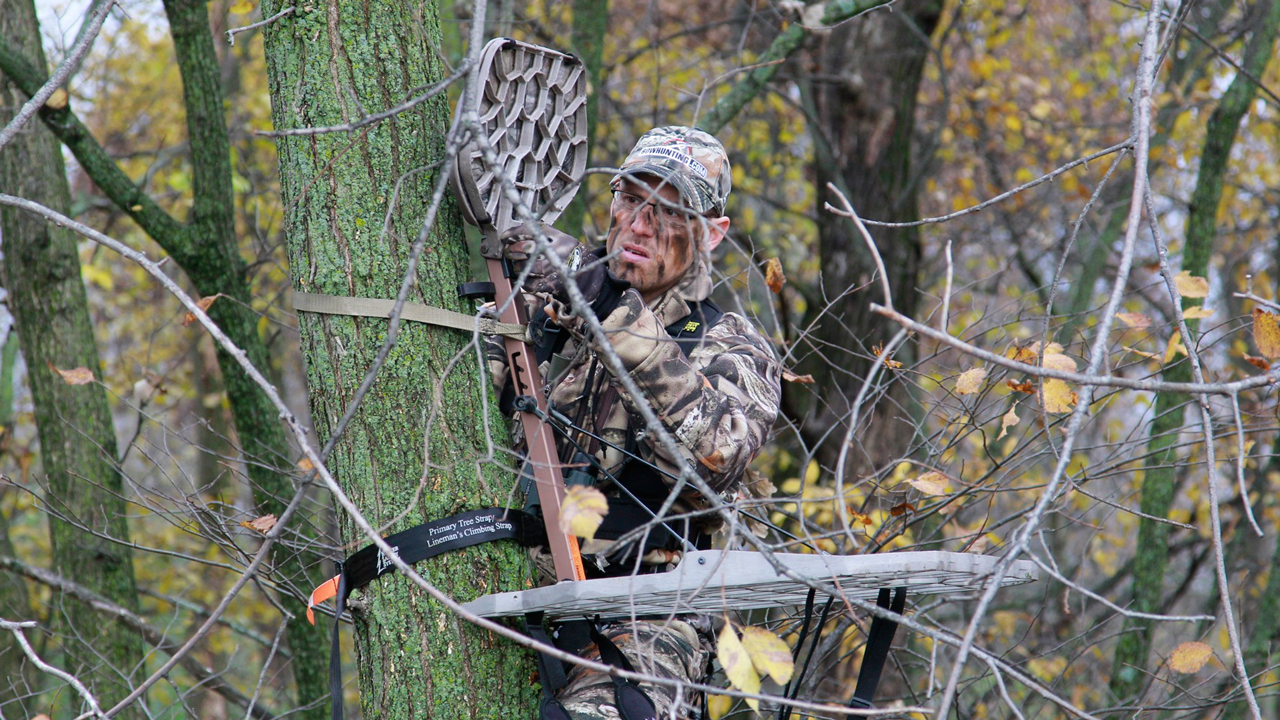LAST UPDATED: January 15th, 2020
“I still wake up thinking about it,” said Ed Fleischer, a friend from church. “Usually, when you get hurt it is because you did something stupid.” Ed is a lucky to be able to tell his story; nearly two years ago he fell 17 feet to the forest floor.
The day of Ed’s accident was a fairly normal, early November day. The morning’s rain broke just in time for a quality evening rut hunt. Ed’s stand of choice that evening had been strapped to his tree without maintenance for two years, and though the treestand visually appeared to be in good shape, unbeknownst to Ed, the fast growing poplar had stretched the straps beyond what they could hold.
With his safety harness donned and ready to connect to his tree tether at hunting height, Ed climbed the tree. “The last thing I remember was clearing a branch off the platform,” said Ed. “Then, when I stepped on the platform, the top strap on the treestand broke.” A moment later, Ed was on the ground.

Despite what some think, falling asleep in the stand is not the leading cause of treestand accidents.
Unfortunately, Ed’s story is far too common. Even though treestands have earned more trust from bowhunters than most other pieces of equipment, the cold reality is that treestand accidents are the leading cause of serious injury in the deer woods. Treestand failures like Ed’s, though less common than other types of falls, can be particularly dangerous due to the height at which the fall occurs and the suddenness of the fall.
My friend Ed is fortunate that the broken bones and bruises healed entirely after 4 months. He now uses his story as a cautionary tale for other hunters. “The cause of my accident was neglect, there were a lot of no-no’s on my part,” explained Ed.
Treestand failures and malfunctions, as discussed in this article, occur when any component of a treestand fails –as a result of defect or negligence—causing an accident. Regardless of the cause of a failure or malfunction, any preventative steps and safety measures are a worthwhile investment of time and energy.
Most accidents are a result of human error, either in assembly or application in the field. However, there have been cases of manufacturing defects causing safety concerns. It is important to keep up to date on information regarding the latest safety recalls, which can be found at the Consumer Product Safety Commission website.
Also, many treestand manufactures give safety and maintenance guidelines to follow for the long-term use of their products. Following all safety recommendations, wearing a safety harness, and utilizing common sense are some of the easiest and best preventative safety measures hunters can take.

Safe treestand hunting is a decision every hunter has to make. Tragedy happens when hunters get lazy in their safe treestand hunting techniques.
Common Treestand Failures and Malfunctions
Straps
A well-built treestand made from 10-20 pounds of metal can easily inspire the confidence of hunters. However, in reality hang-on treestands are fully dependent on the strength of synthetic straps weighing only a few ounces to hold the stand in place. Like Ed discovered, these attachment straps are common culprits in treestand accidents.
The straps themselves are often not the problem. However, in a hunting application, straps made from polypropylene or similar materials are susceptible to increased wear. According to the data available to Glen Mahyew of the Tree Stand Safety Association, strap failures are one of the top three preventable causes of treestand accidents. “A lot of times we see strap failures,” explained Mayhew. “Often that failure is related to behavior of the hunter not the strap itself… because people are leaving their stands year after year,” he explained.
Leaving treestands in the woods for prolonged periods of time exposes the straps to UV light, which can weaken its strength. UV light attacks the fibers in the strap’s webbing, weakening the molecular bonds in the material. Combine a weakened strap with factors such as the natural growth of the tree, and a stand left in the woods for months could be a ticking time bomb. Both were factors in Ed Fleischer’s accident, “When we cut the straps off later they flew off like rubber bands—that how much tension was on them.”
Also, any small cut to a strap or rodent damage can create premature failure in the strap. Don’t overlook the fact that webbing and ropes on ladders, climbing sticks, and tree steps can wear in the same fashion as treestand straps and therefore require just as much maintenance as those holding your stands. If any of your straps seem compromised in anyway, replace them before using your equipment.

The straps on a treestand tend to take the most abuse when left in the elements for extended periods of time.
Metal Parts: Cables, Chains, Bolts, and Welds
In addition to the treestand straps, other components such as the cables, chains, metal bands, and even welds can deteriorate over time, creating dangerous weak points in the structure of the stand itself. Just like with the deterioration of treestand straps, metal can weaken when exposed to the elements for extended periods of time.
“Who in their right mind would leave their bows in the woods and expect it to shoot well after 5 years.. but hunters will for a treestand,” explained John Louk, the Executive Director of the Treestand Manufacturer’s Association.
Treestand cables are especially susceptible to corrosion. “Cables on fixed position stands are notorious for failing… they are exposed to cold, hot, and everything in between,” explained Louk. Also, unintended flexing and twisting of a cable in transport, hanging, or climbing has the potential to weaken the cables strength. “When you start seeing any deterioration, then it’s time to replace them,” adds Mayhew of TSSA. This includes regular inspections and replacements of cables and metal bands on climbing stands as well as hang on stands.
Additionally, hunters often overlook bolts and welds in their visual inspections of their treestands. A bent or rusted bolt should be addressed immediately and before using the stand again. “Make sure all the hardware is tight,” explains Mayhew. “If you have any concerns at all, do not hesitate to contact the manufacturer.”

Treestands have a number of parts, any of which could fail. Be sure to give your stand a thorough inspection prior to climbing in.
General Safety
Though it is a precaution every hunter should take, treestand safety is about more than just wearing a safety harness. The Tree Stand Safety Association has created what they call the ABC’s of treestand safety; Always remember to remove and inspect your stands, Buckle into a full body harness, and Connect to the tree before leaving the ground. Connecting to the tree could include the use of “life-line” safety lines for hang-on setups, tethering to the tree before ascending in a climber, as well as using a tether and lineman’s belt to setup and teardown stands.
The Treestand Manufacture’s Association encourages users to fully read the equipment’s instructions, a step many hunters ignore. “A good example is when they don’t read the directions, and the directions say don’t leave this stand installed for longer than 14 days,” explains Louk. Also, TMA recommends that you practice with your equipment at ground level, always be connected to the tree, inspect every stand before use, and never hurry. “When people get in a hurry they take short cuts,” explains Louk.
As a whole, when used properly and with safety equipment, treestands are a very safe piece of hunting equipment. However, it’s is our responsibility as hunters to make sure that we are doing everything possible to ensure our safety and the safety of anyone using our equipment– whether that is a climber, hang-on, or ladder stand. Your loved ones depend on your decisions to bring you home safely.
Ed Fleischer’s treestand accident changed the way he operates in the woods. “Check your stands. You can’t believe how many people have changed their straps after talking with me,” explained Ed, “The older you get the harder the ground feels.”

 By
By 



